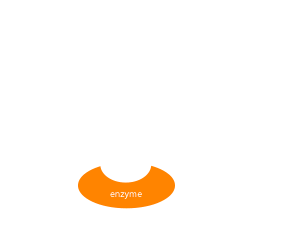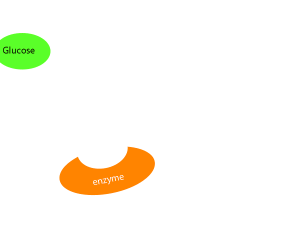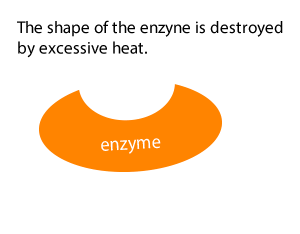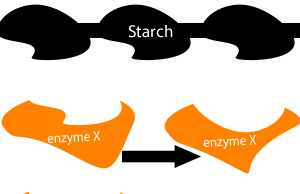Enzymes - the little chemical particles that
help breakdown food.
Enzymes are chemicals found in living organisms that help speed up chemical reactions. Take yeast for example, we use these little micro-organisms in the making of bread and wine as well as cheese.
When yeast are placed in a dough mixture they go to work breaking down the sugar present in the dough mixture into alcohol and carbon dioxide.
Yeast do this by employing special chemicals called enzymes which speed up the breakdown of foods such as sugar into simpler, smaller particles.
Looking at the animation on the right, representing an enzyme breaking down a sugar particle, we notice that the enzyme has a special shape that allows the sugar particle to fit snuggly into the enzyme.
All enzymes have specific shapes that are unique to the shape of the food particle they are responsible for breaking down.

Now it is important to place the dough mixture in a warm place so the yeast can work more efficiently in breaking down the glucose (sugar) into carbon dioxide and alcohol. When placed in a cold temperature, however, the particles move so slowly that the enzymes can't get to the sugar particles quickly enough to break them down and produce carbon dioxide. This causes the dough to stop rising.
The animation on the right shows the movement of particles when the temperature is very low. Compare the difference of the cold temperature shown on the right with the warmer temperature shown above. It is obvious that there is less activity taking place amongst particles in cold conditions than in warm conditions.



2) Consider the enzyme X shown on the right. It is responsible for breaking the starch present in food that enters our mouth. The black arrow indicates that something has caused a change in enzyme X.
a) What could possibly have caused the change?
b) Is the new shaped enzyme now just as capable of breaking down starch in our mouths? Explain

Consider what happens when the temperature is too cold or too hot.
a) The amount of sugar present will decrease.
b) The amount of enzyme present will decrease.
